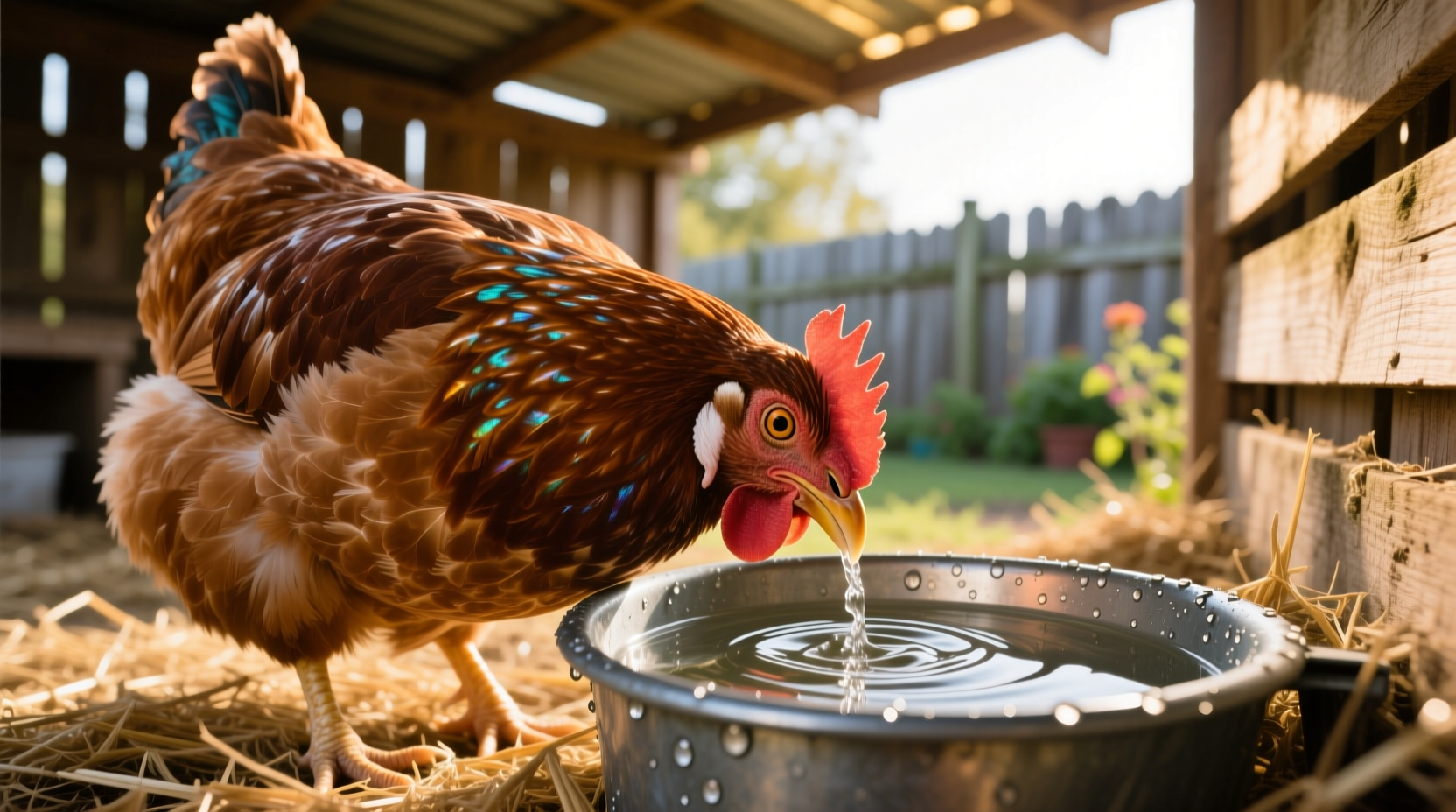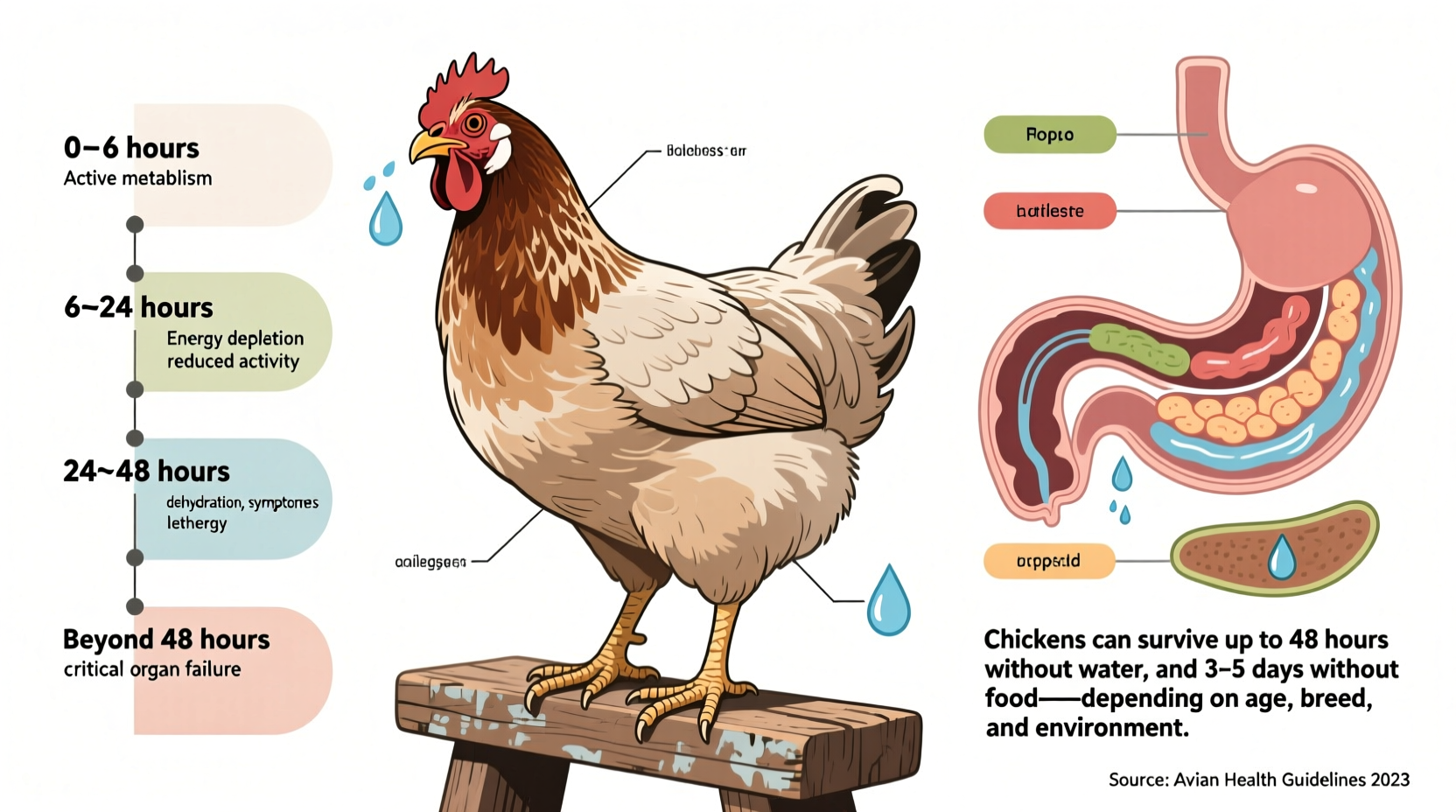Understanding how long your flock can endure without sustenance isn't just academic knowledge—it's critical information that could save your chickens' lives during emergencies. Whether you're dealing with a frozen waterer in winter, an automatic feeder malfunction, or unexpected travel, knowing the precise timelines and warning signs helps you respond appropriately before irreversible damage occurs.
Immediate Danger: Water Deprivation vs. Food Shortage
Many backyard chicken keepers mistakenly believe food scarcity poses the greatest immediate threat. The reality is quite different. Chickens can survive significantly longer without food than without water, making hydration the absolute priority in emergency situations.
| Survival Factor | Critical Timeframe | Warning Signs | Irreversible Damage |
|---|---|---|---|
| Without Water | 24-48 hours | Drooping wings, reduced activity, pale combs | 48-72 hours (organ failure) |
| Without Food | 4-5 days | Weight loss, decreased egg production | 7+ days (muscle wasting) |
| Extreme Heat + No Water | 6-12 hours | Rapid breathing, panting, lethargy | 24 hours (heat stroke) |
Environmental Factors That Dramatically Alter Survival Time
The standard timeframes represent ideal conditions. In reality, multiple variables can shorten or extend these windows significantly:
- Temperature extremes: In temperatures above 90°F (32°C), chickens can succumb to dehydration in under 12 hours. Conversely, in cool conditions (50-60°F/10-15°C), they might survive 4-5 days without water
- Age considerations: Chicks under 4 weeks require constant access to water and can die within 12-24 hours without it. Mature laying hens are more resilient but still vulnerable
- Health status: Birds with respiratory infections or digestive issues dehydrate faster. According to USDA poultry guidelines, sick chickens may show critical symptoms within 18 hours of water deprivation
- Activity level: Free-range chickens exercising in summer heat dehydrate twice as fast as confined birds in shaded coops

Recognizing Critical Warning Signs
Knowing what to watch for helps you intervene before emergency becomes tragedy. The progression follows a predictable timeline:
First 6 Hours Without Water
Subtle changes begin: slightly reduced activity, less frequent vocalizations, and minor comb discoloration. Egg production typically stops within this window as the body conserves resources.
6-24 Hour Mark
Clear warning signs emerge: drooping wings, pale or shriveled combs, decreased droppings. Chickens may stand motionless with eyes partially closed. According to Penn State Extension's poultry management guidelines, this is the critical intervention window before irreversible damage begins.
24-48 Hour Crisis
Severe dehydration sets in: labored breathing, extreme lethargy, cold extremities. At this stage, immediate rehydration is essential but must be done carefully to avoid shock.
Emergency Response Protocol
If you discover your chickens without water for more than 12 hours, follow these veterinarian-recommended steps:
- Assess severity: Check comb temperature and moisture, breathing rate, and responsiveness
- Provide immediate hydration: Offer electrolyte solution (1 quart water + 1 tsp sugar + 1/4 tsp salt) rather than plain water to prevent shock
- Shade and cool: Move affected birds to shaded area; mist with cool (not cold) water if overheated
- Monitor recovery: Expect gradual improvement within 2-4 hours; consult vet if no improvement in 6 hours
- Gradual reintroduction of food: Wait 2-3 hours after successful rehydration before offering food
Avoid common mistakes like forcing water orally (risk of aspiration) or providing ice-cold water (can cause shock). The American Veterinary Medical Association specifically warns against these practices in poultry emergency care.
Preventing Future Emergencies
Proactive measures eliminate most water deprivation risks:
- Install backup watering systems—automatic float valves with reservoir backups
- Use heated bases in winter; check waterers twice daily during freezing temperatures
- Implement remote monitoring with water level sensors
- Establish neighbor check-ins when traveling (provide clear instructions)
- Maintain 24/7 access to clean water—never restrict water to increase feed consumption
Remember that chickens won't compensate by drinking more later if water is temporarily unavailable. Consistent access is non-negotiable for flock health and productivity.
When to Call a Professional
Seek immediate veterinary care if chickens show:
- No response after 4 hours of proper rehydration
- Seizures or complete unresponsiveness
- Green or bloody droppings (indicates advanced illness)
- Extended periods without water in extreme temperatures (over 12 hours above 85°F/29°C)
Time is critical—poultry vets report significantly better outcomes when treatment begins within the first 24 hours of severe dehydration.











 浙公网安备
33010002000092号
浙公网安备
33010002000092号 浙B2-20120091-4
浙B2-20120091-4